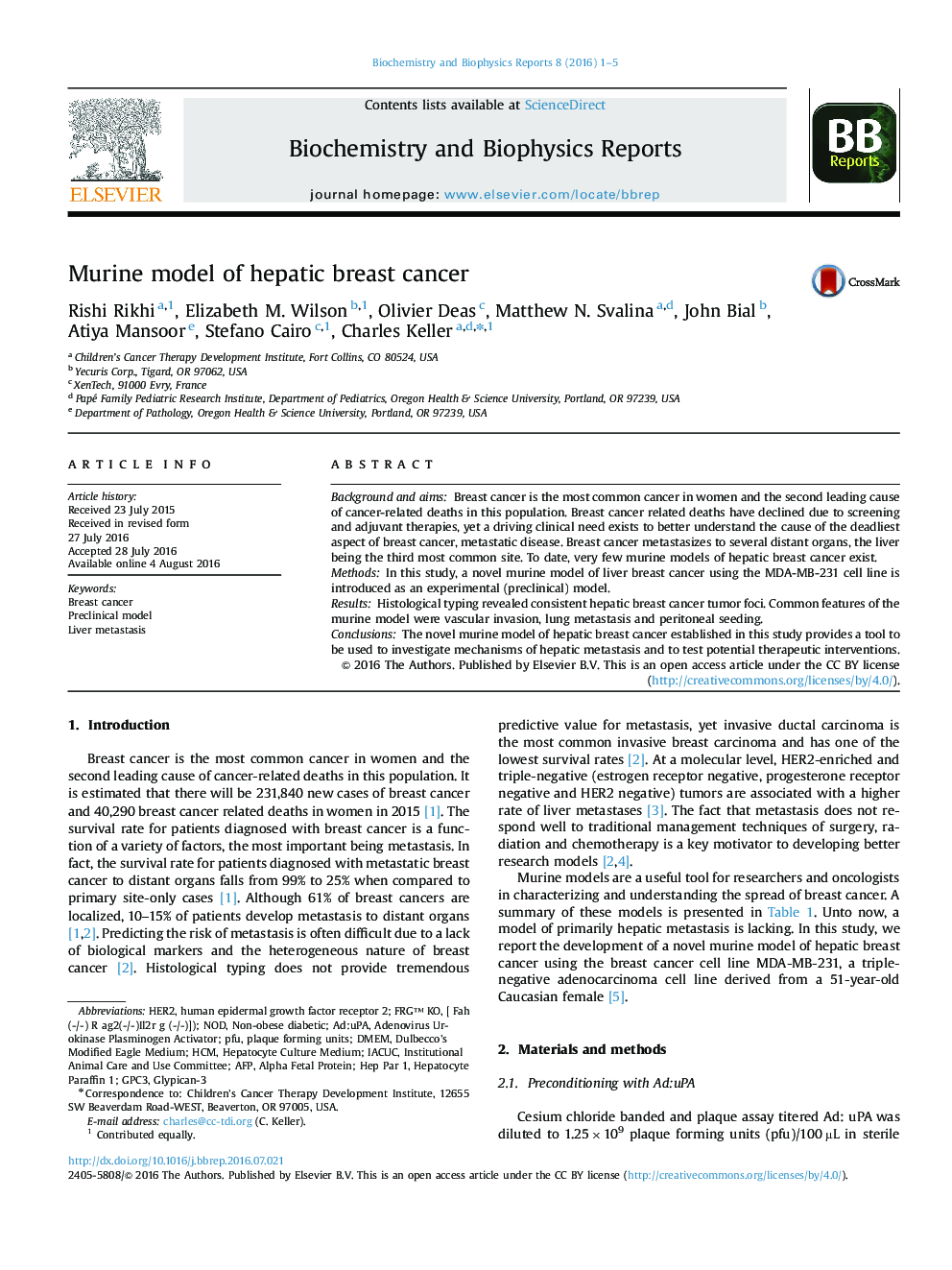| کد مقاله | کد نشریه | سال انتشار | مقاله انگلیسی | نسخه تمام متن |
|---|---|---|---|---|
| 1941571 | 1536900 | 2016 | 5 صفحه PDF | دانلود رایگان |
• We present a novel murine model of hepatic breast cancer.
• Histomorphology is uniform and consistent with the human disease.
• This model can be used to test preclinical therapeutic regimens.
Background and aimsBreast cancer is the most common cancer in women and the second leading cause of cancer-related deaths in this population. Breast cancer related deaths have declined due to screening and adjuvant therapies, yet a driving clinical need exists to better understand the cause of the deadliest aspect of breast cancer, metastatic disease. Breast cancer metastasizes to several distant organs, the liver being the third most common site. To date, very few murine models of hepatic breast cancer exist.MethodsIn this study, a novel murine model of liver breast cancer using the MDA-MB-231 cell line is introduced as an experimental (preclinical) model.ResultsHistological typing revealed consistent hepatic breast cancer tumor foci. Common features of the murine model were vascular invasion, lung metastasis and peritoneal seeding.ConclusionsThe novel murine model of hepatic breast cancer established in this study provides a tool to be used to investigate mechanisms of hepatic metastasis and to test potential therapeutic interventions.
Journal: Biochemistry and Biophysics Reports - Volume 8, December 2016, Pages 1–5
